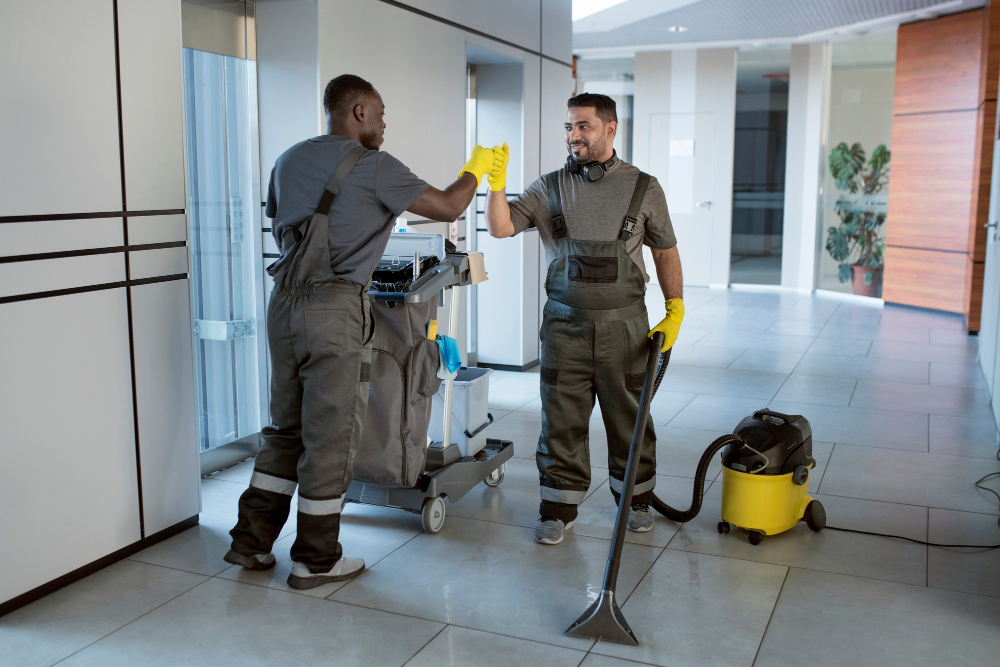If you live in a home built before the 1980s, chances are you’ve heard the term urea formaldehyde foam insulation (UFFI) thrown around — usually with concern. This insulation material was once seen as a miracle solution to energy efficiency, but over time, it became infamous for potential health hazards. Today, many homeowners are seeking UFFI removal services to eliminate risks and improve air quality. But what is UFFI, and why is it such a big deal?
A Brief History of Urea Formaldehyde Foam Insulation
Origins in the 1970s Housing Boom
UFFI emerged during the energy crisis of the 1970s when energy-efficient homes became a national priority. It was cheap, easy to apply, and promised great insulation.
Why It Became Popular
It could be injected into walls, even those already built, without major renovation. This made it incredibly appealing to homeowners looking to cut heating bills.
What Exactly Is Urea Formaldehyde Foam Insulation?
Chemical Composition
UFFI is made from a mix of urea and formaldehyde, which creates a lightweight foam. Once injected, it expands and hardens into place.
How It’s Applied in Buildings
Installers would drill small holes in walls and inject the foam inside. While effective initially, it breaks down over time, releasing formaldehyde gas.
The Problem with UFFI
Health Hazards
Urea formaldehyde foam insulation‘s (UFFI’s) biggest drawback is its tendency to emit formaldehyde gas. Exposure can cause symptoms like irritation of the eyes, nose, throat, and skin.
Off-Gassing and Formaldehyde Emissions
Over time, the foam deteriorates and releases higher concentrations of formaldehyde — especially in warmer, more humid environments.
Structural and Performance Issues
UFFI can shrink, crack, and even powder over time, making it ineffective for insulation and difficult to detect without testing.
Signs Your Home May Contain UFFI
Construction Date Clues
Homes built between 1960 and 1980 are prime candidates for having UFFI.
Visible Foam or Odors
You might spot greyish, crumbly foam in wall cavities or notice a strong, chemical-like odor.
Home Inspection Indicators
Qualified home inspectors can identify UFFI using specific equipment and historical construction knowledge.
Legal and Regulatory Status
UFFI Bans and Restrictions
Countries like Canada banned UFFI for residential use in the 1980s. In the U.S., it’s not officially banned but heavily regulated.
Requirements During Real Estate Transactions
Disclosure of UFFI presence is required in many regions when selling a home. Failure to disclose can lead to legal trouble.
Health Impacts of UFFI Exposure
Short-Term Symptoms
Think watery eyes, headaches, nausea, and coughing. These are early signs of formaldehyde exposure.
Long-Term Health Effects
Chronic exposure has been linked to respiratory issues, allergic reactions, and even cancer in some cases.
Vulnerable Groups at Risk
Children, the elderly, and people with respiratory conditions are especially vulnerable to UFFI-related effects.
UFFI in the Modern World
Is It Still Used Today?
Not in residential homes. Its usage has been phased out and replaced with safer alternatives.
How Modern Insulation Differs
Today’s insulation materials are more stable, safer, and environmentally friendly — think spray foam, cellulose, and fiberglass.
Why Consider UFFI Removal?
Health and Safety Concerns
Getting rid of UFFI is a step toward cleaner air and a safer home environment.
Property Value and Marketability
Homes with known UFFI can be harder to sell. Removal can increase your home’s market value.
What Are UFFI Removal Services?
Overview of the Process
These services involve professional teams using specialized tools to safely extract the foam.
Equipment and Expertise Required
Because UFFI is embedded deep within walls, removal requires industrial vacuums, negative air pressure machines, and expert handling.
How to Choose a Reliable UFFI Removal Contractor
Certification and Licensing
Only hire contractors with proper environmental certifications and licenses.
Customer Reviews and Experience
Look for companies with proven experience and positive customer feedback in UFFI removal services.
The UFFI Removal Process – Step by Step
Initial Assessment
A team will first inspect and assess the extent of urea formaldehyde foam insulation in your home.
Containment and Extraction
Walls are opened up, foam is extracted, and the area is sealed off to prevent contamination.
Air Purification and Testing
HEPA filters and air scrubbers are used to purify the air, and post-removal air testing ensures safety.
Cost of UFFI Removal
Factors Affecting Price
Size of the home, foam quantity, accessibility, and local labor rates all play a part.
Is It Covered by Insurance?
Typically, it’s not covered unless there’s a documented health issue. Always check your policy.
UFFI Alternatives: Safer Modern Insulation Options
Fiberglass, Cellulose, and Spray Foam
These options are non-toxic, more efficient, and long-lasting.
Environmental Considerations
New insulation types are also better for the planet — many are made from recycled or renewable materials.
Common Myths About UFFI
Misconceptions Around Health Risks
Not all UFFI installations cause health issues — but it’s a risk you don’t want to gamble with.
Myths About Removal Costs
Some think removal is outrageously expensive — in reality, it’s more affordable than long-term health costs.
Proactive Measures for Homeowners
Regular Air Testing
Even if you don’t suspect UFFI, indoor air quality tests are a smart preventive move.
Preventative Renovations
If you’re remodeling, take the opportunity to remove UFFI and upgrade your insulation.
Conclusion
Urea formaldehyde foam insulation was once a popular solution but is now widely recognized for its risks. Today, UFFI removal services play a crucial role in restoring air quality and property value. Whether you’re buying an older home or already live in one, understanding the implications of UFFI is essential. Being proactive can make all the difference between a hazardous living space and a healthy, happy home.






